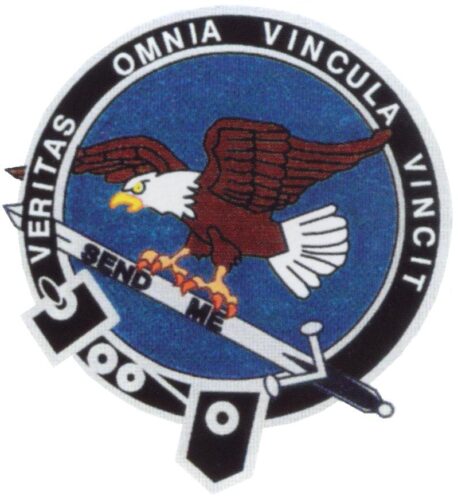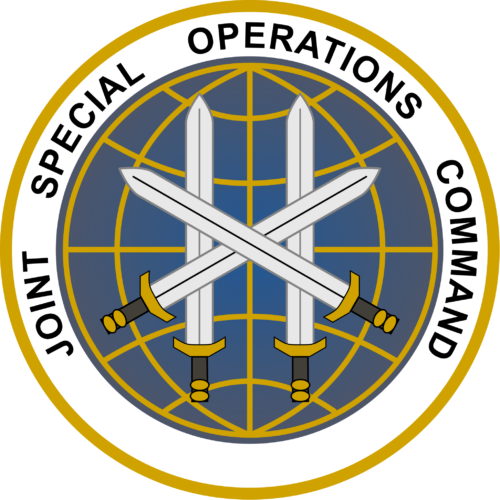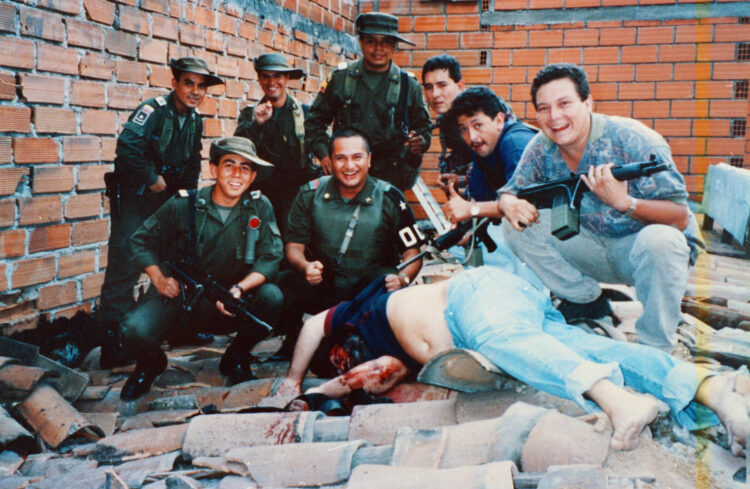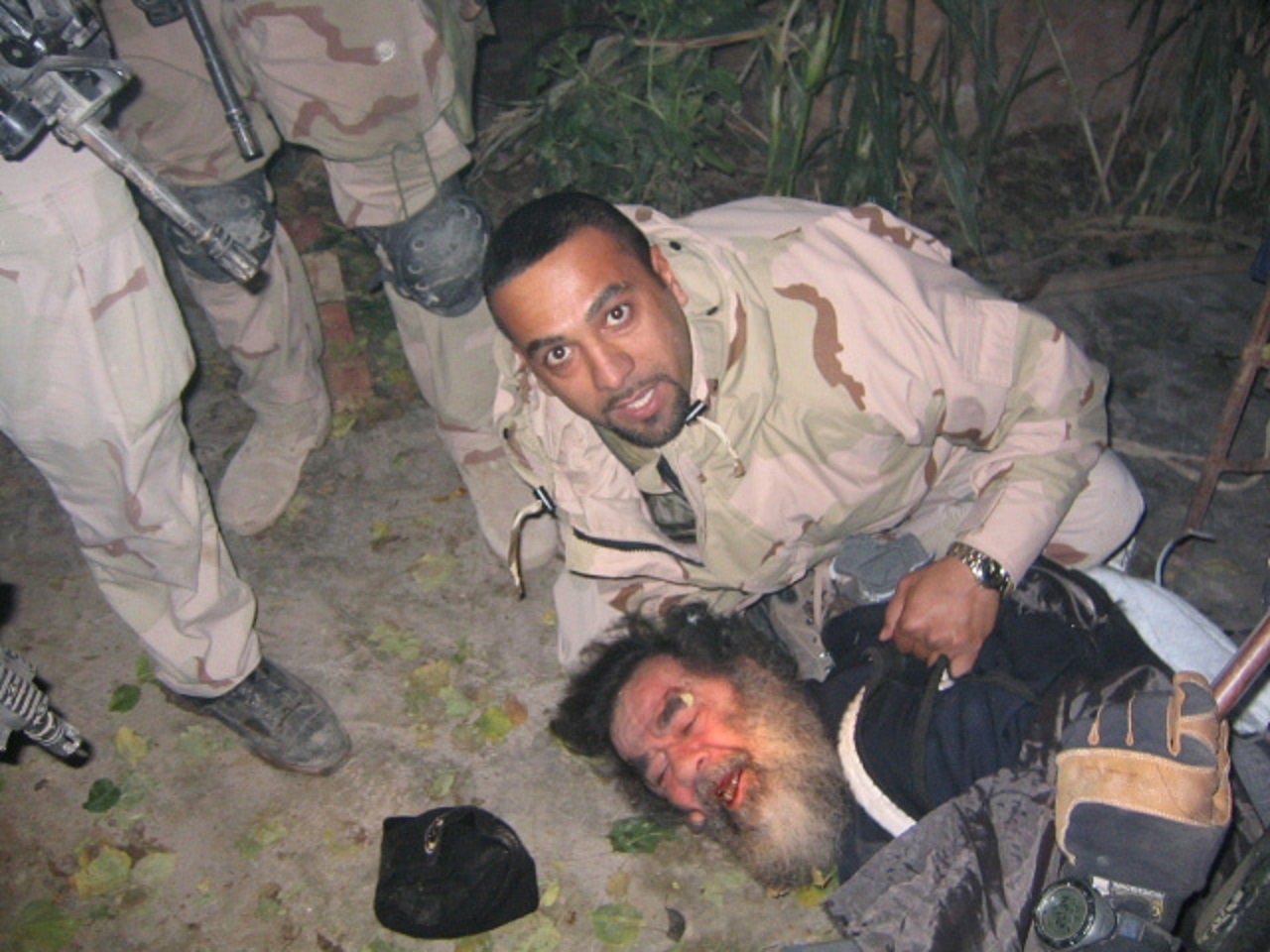The capture of deposed Iraqi leader Saddam Hussein on 13 December 2003. The operation, codenamed Operation Red Dawn, was executed by Task Force 121—an elite and covert joint special operations team. The team included ISA operators, C Squadron SFOC-D, and the 1st Brigade Combat Team of the 4th Infantry Division. US. Army photo.
The United States Army Intelligence Support Activity (USAISA), often shortened to Intelligence Support Activity (ISA), is a specialized unit within the U.S. Army. It serves as the intelligence gathering component of the Joint Special Operations Command (JSOC). Many of the details about the ISA and its operations remain classified.
Origins and Evolution
The need for a dedicated special operations intelligence unit was recognized as early as 1965 by the Department of Defense. The original unit, known as the Field Operations Group (FOG), was designed to fill the Army’s need for clandestine intelligence collection. In 1979, following the overthrow of Nicaraguan dictator Anastasio Somoza, the U.S. wanted a team to covertly survey the situation on the ground and provide officials with a survey of the U.S. embassy. This solidified the need for a dedicated special operations intelligence unit like ISA, leading to its establishment in 1981.

Names and Nicknames
The ISA has been known by various names over time, including Joint Reconnaissance Evaluation Group (JREG), Mission Support Activity (MSA), Office of Military Support (OMS), and Field Operations Group (FOG). It has also been nicknamed “The Activity” and “the Army of Northern Virginia”. The official name of the unit from 1981 to 1989 was USAISA.
It has also gone by a number of two-word Special Access Program names, including OPTIMIZE TALENT, ROYAL CAPE, CENTRA SPIKE, CAPACITY GEAR, GRANTOR SHADOW, TORN VICTOR, QUIET ENABLE, OPAQUE LEAF, CEMETERY WIND, GRAY FOX, TITRANT RANGER, and INTREPID SPEAR.
Role and Operations
Unlike many other special operations forces of the U.S. military that are dedicated to direct combat, ISA is more oriented towards secretive and clandestine actions necessary to support other military operations. Its scope is quite large, and it often works in support of JSOC, SOCOM and even other intelligence agencies. ISA now focuses on preparing the battlespace for military operations across the globe. It primarily acts as an enabler for JSOC special mission units.
Joint Special Operations Command
The Joint Special Operations Command (JSOC) is a joint component command of the U.S. Special Operations Command (USSOCOM or SOCOM) and is charged with studying special operations requirements and techniques to ensure interoperability and equipment standardization, to plan and conduct special operations exercises and training, to develop joint special operations tactics, and to execute special operations missions worldwide1.
JSOC was established in 1980 in the aftermath of the failed attempt by US Special Operations Forces to rescue American hostages held in Iran (Operation Eagle Claw). JSOC is designed as a common command structure between Army, Air Force, and Navy Special Operations elements.
JSOC oversees the Special Mission Units of SOCOM. These are elite special operations forces units that perform highly classified activities. So far, the following four JSOC units have been publicly acknowledged: the Army’s 1st Special Forces Operational Detachment-Delta (1st SFOD-D); the Navy’s Naval Special Warfare Development Group (DEVGRU); the Air Force’s 24th Special Tactics Squadron (24 STS); and the Army’s Intelligence Support Activity (ISA).

U.S. Special Operations Command
The U.S. Special Operations Command is the unified combatant command charged with overseeing the various special operations component commands of the Army, Marine Corps, Navy, and Air Force of the United States Armed Forces.
SOCOM is headquartered at MacDill Air Force Base in Tampa, Florida. The idea of an American unified special operations command had its origins in the aftermath of Operation Eagle Claw, the disastrous attempted rescue of hostages at the American embassy in Iran in 1980.
Since its activation on 16 April 1987, SOCOM has participated in many operations, from the 1989 invasion of Panama to the War on Terror3. SOCOM is involved with clandestine activity, such as direct action, special reconnaissance, counterterrorism, foreign internal defense, unconventional warfare, psychological warfare, civil affairs, and counter-narcotics operations3.
Both JSOC and SOCOM play crucial roles in supporting U.S. military operations through their specialized capabilities. Their history, operations, contributions underscore their importance within the broader framework of U.S. defense strategy.
Notable Operations

ISA has been involved in numerous operations since its inception. It played a significant role in Operation Winter Harvest, Operation Desert Storm, Operation Gothic Serpent, Operation Joint Endeavor, Operation Enduring Freedom, Operation Iraqi Freedom, Operation Prime Chance, and Operation Inherent Resolve. Its operations have spanned the globe and have involved different types of missions, showcasing the versatility and adaptability of ISA.
Intelligence Gathering Techniques
Operationally, ISA is a dedicated intelligence group that does the intelligence legwork for special operations groups. While Delta and DEVGRU focus on direct engagement and specialized combat tactics, ISA conducts intelligence and espionage operations at a tactical level.
The Intelligence Support Activity conducts its operations during and in advance of U.S. military operations. Human intelligence (HUMINT) and signals intelligence (SIGINT) are the most common products of their operations.
HUMINT is intelligence gathered by means of human sources and interpersonal contact. It is distinct from more technical means of intelligence gathering such as signal interception1. HUMINT can be conducted in a variety of ways, including via espionage, reconnaissance, interrogation, or interviews. NATO defines HUMINT as “a category of intelligence derived from information collected and provided by human sources”. A typical HUMINT activity consists of interrogations and conversations with persons having access to information.
SIGINT is intelligence-gathering by interception of signals. This can be either communications between people (communications intelligence—abbreviated to COMINT) or from electronic signals not directly used in communication (electronic intelligence—abbreviated to ELINT). SIGINT is derived from electronic signals and systems used by foreign targets, such as communications systems, radars, and weapons systems. It provides a vital window for our nation into foreign adversaries’ capabilities, actions, and intentions.
Both HUMINT and SIGINT are crucial components of intelligence gathering, each offering unique insights and information that are invaluable for national security and strategic decision-making.
Significance
The ISA remains one of the least known intelligence components of the United States military, tasked with clandestine HUMINT operations and collecting actionable intelligence during or prior to JSOC missions. Despite its low profile, its role in supporting U.S. military operations worldwide is invaluable.
The ISA plays a crucial role in supporting U.S. military operations through its specialized intelligence gathering capabilities. Its history, operations, contributions underscore its importance within the broader framework of U.S. defense strategy.
Resource
U.S. Special Operations Command
SOCOM.mil
*The views and opinions expressed on this website are solely those of the original authors and contributors. These views and opinions do not necessarily represent those of Spotter Up Magazine, the administrative staff, and/or any/all contributors to this site.

